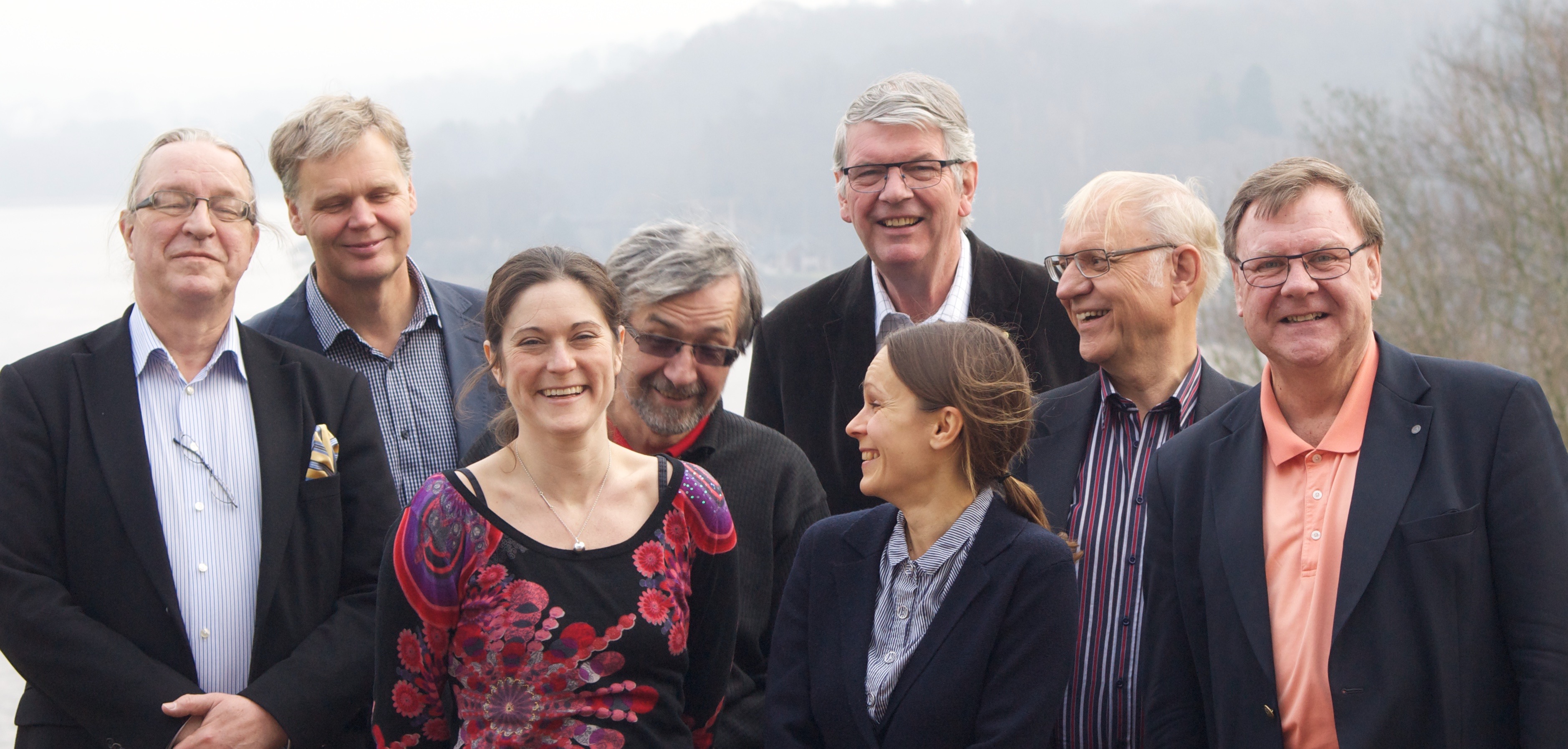CWS is a population-based longitudinal birth cohort study investigating the modifiable risk factors for asthma and allergy in children. CWS started in 2003, when children were recruited at the age of 6 months. A new birth cohort was established in 2018.
In children, asthma and allergy are the most common diseases of chronic character. These disorders have a negative impact on quality of life and performance at school.
Identifying modifiable risk factors allow developing preventing measures. The Children of Western Sweden (CWS) birth cohort was established to study early life risk factors for developing allergy and asthma in children. Started in 2003 when a random sample of children born in Region of Western Sweden were recruited at the age of 6 months. Prospective follow-ups were undertaken at 12 months, 4.5, 8, and 12 years. So far, we have demonstrated that:
In 2018, a new birth cohort was started, ‘CWS 2018’. From a random sample of infants born in the Region of Western Sweden in 2018, 4,576 infants were recruited. Data were collected with structured questionnaires, focusing on asthma, eczema, food allergy and allergic rhinoconjunctivitis. So far, questionnaires have been answered at 6 months and 12 months. Future questionnaires are planned. Clinical investigations are also planned as a complement to the questionnaires.
Anchor: Main sub-projects
To reduce risk of food allergy, Swedish advice until 2001 was to postpone introduction of eggs, fish and peanuts until age one year. Earlier introduction of complementary feeding is now advised.
Our aim was to study possible differences in food introduction between children born in 2018 and in 2003, as well as adherence to current advice.
Introduction of complementary feeding was made earlier in 2018 compared to 2003 for gluten, fish and eggs. Current recommendations from child health centres seem to be followed.
Frida Strömberg Celind
Göran Wennergren
Emma Goksör
Elisabeth Carlén
Birte Schilling
In the 2003 cohort we analysed prevalence of wheezing disorder/asthma as well as risk factors of wheezing disorder at age 12 months. Increased risk of wheezing disorder was associated with treatment with broad spectrum antibiotics during the first week of life, male sex, gestational age less than 37 weeks, mother with asthma, sibling with asthma, eczema, and duration of breast feeding less than four months.
To analyse prevalence of wheezing disorder/asthma and risk factors at age 12 months in children born 2018 compared with 2003. Is the increased risk of wheeze/asthma following antibiotics during the first week of life, seen in the new cohort as well?
Frida Strömberg Celind
Emma Goksör
Göran Wennergren
Styliana Vasileiadou
Many countries, including Sweden, lack monitoring of infant sleep practices, despite associations with sudden infant death.
To study sleep positions, bed-sharing and breastfeeding in the new birth cohort CWS 2018, and compare with the previous cohort, CWS 2003.
Most infants slept in separate cots during the first three months. However, bed-sharing showed an increasing trend. At three months, 43% of the infants slept in their parents’ bed and baby nests were popular. Bed-sharing was positively associated with breastfeeding, although the association may not be causal.
Göran Wennergren
Bernt Alm
Frida Strömberg Celind
Emma Goksör

Photo of the group of investigators in the ‘Children of Western Sweden’ study in 2014. Meeting at the Jonsered Mansion outside Gothenburg. From the left: Bernt Alm, Per Möllborg, Emma Goksör, Laslo Erdes, Rolf Pettersson, Petra Loid, Nils Åberg and Göran Wennergren.
• Emma Goksör, current principal investigator, Department of Pediatrics, University of Gothenburg and Queen Silvia Children’s Hospital
• Göran Wennergren, pioneer principal investigator, current co-principal investigator, Department of Pediatrics, University of Gothenburg and Queen Silvia Children’s Hospital
• Frida Strömberg Celind, Department of Pediatrics, University of Gothenburg and Närhälsan Child Health Centre Mölndal, Region Västra Götaland
• Styliana Vasileiadou, Department of Pediatrics, University of Gothenburg and Queen Silvia Children’s Hospital
• Bernt Alm, pioneer co-principal investigator, Department of Pediatrics, University of Gothenburg
• Per Möllborg, Department of Pediatrics, University of Gothenburg and Child Welfare, Region Västra Götaland
• Rolf Pettersson, Department of Pediatrics, University of Gothenburg
• Nils Åberg, Department of Pediatrics, University of Gothenburg
Department of Pediatrics, University of Gothenburg.
Anchor: Collaborators• West Sweden Asthma Study
• The Nordic EpiLung study
• STELLAR, reSpiraTory EpidemioLogy research pLAtfoRm in Sweden
• ALF
• FoU Västra Götaland
• Stiftelsen Astma- & Allergiförbundets Forskningsfond
• Swedish Heart-Lung Foundation
• Frimurare Barnhusfonden
If you want further information on CWS 2003 and CWS 2018, please mail or phone the contact persons below.
Göran Wennergren
Department of Paediatrics
University of Gothenburg
Queen Silvia Children’s Hospital
416 85 Gothenburg, Sweden
goran.wennergren@pediat.gu.se
+46 705-37 46 12
Emma Goksör
Department of Paediatrics
University of Gothenburg
Queen Silvia Children’s Hospital
416 85 Gothenburg, Sweden
emma.goksor@vgregion.se
+46 31-343 80 25
Alm B, Wennergren G, Erdes L, Möllborg P, Pettersson R, Åberg N, Norvenius SG. Föräldrar har tagit till sig råden för att förebygga plötslig spädbarnsdöd. [Parents have accepted the advice on how to prevent sudden infant death]. Läkartidningen. 2004; 101 (14): 1268-70.
Alm B, Möllborg P, Erdes L, Pettersson R, Åberg N, Norvenius SG, Wennergren G. Luftrörsobstruktiva besvär och eksem oväntat vanligt hos svenska spädbarn. Intressanta fynd i enkätstudie om kost- och levnadsvanor hos småbarn. [Bronchial obstruction and eczema unexpectedly common among Swedish infants. Interesting findings in an questionnaire study about food and life style habits of small children]. Läkartidningen. 2005; 102 (7): 472-6.
Alm B, Möllborg P, Erdes L, Pettersson R, Åberg N, Norvenius G, Wennergren G. SIDS risk factors and factors associated with prone sleeping in Sweden. Arch Dis Child. 2006; 91: 915-9.
Alm B, Erdes L, Möllborg P, Pettersson R, Åberg N, Norvenius G, Wennergren G. Neonatal antibiotic treatment is a risk factor for early wheezing. Pediatrics. 2008; 121 (4): 697-702. doi: 10.1542/peds.2007-1232.
Alm B, Erdes L, Möllborg P, Pettersson R, Norvenius G, Åberg N, Goksör E, Wennergren G. Early introduction of fish decreases the risk of eczema in infants. Arch Dis Child. 2009; 94 (1): 11-5. doi: 10.1136/adc.2008.140418.
Möllborg P, Wennergren G, Norvenius G, Alm B. Bed sharing among six-month-old infants in western Sweden. Acta Paediatr. 2011; 100 (2): 226-30.
Alm B, Goksör E, Thengilsdottir H, Pettersson R, Möllborg P, Norvenius G, Erdes L, Åberg N, Wennergren G. Early protective and risk factors for allergic rhinitis at age 4½ years. Pediatr Allergy Immunol. 2011; 22 (4): 398-404.
Goksör E, Alm B, Thengilsdottir H, Pettersson R, Åberg N, Wennergren G. Preschool wheeze – impact of early fish introduction and neonatal antibiotics. Acta Paediatr. 2011; 100 (12): 1561-6. doi: 10.1111/j.1651-2227.2011.02411.x.
Goksör E, Thengilsdottir H, Alm B, Norvenius G, Wennergren G. Prenatal paracetamol exposure and risk of wheeze at preschool age. Acta Paediatr. 2011; 100 (12): 1567-71.
Lødrup Carlsen KC, Roll S, Carlsen KH, Mowinckel P, Wijga AH, Brunekreef B, Torrent M, Roberts G, Arshad SH, Kull I, Krämer U, von Berg A, Eller E, Høst A,Kuehni C, Spycher B, Sunyer J, Chen CM, Reich A, Asarnoj A, Puig C, Herbarth O, Mahachie John JM, Van Steen K, Willich SN, Wahn U, Lau S, Keil T; GALEN WP 1.5 ‘Birth Cohorts’ working group. Collaborators: Wickman M, Hallner E, Alm J, Almqvist C, Wennergren G, Alm B, Heinrich J, Smit H, Thijs C, Mommers M, Bindslev-Jensen C, Halken S, Fantini M, Bravi F, Porta D, Forastiere F, Custovic A, Dubakiene R, Mahachie J. Does pet ownership in infancy lead to asthma or allergy at school age? Pooled analysis of individual participant data from 11 European birth cohorts. PLoS One. 2012; 7 (8): e43214.
Goksör E, Alm B, Pettersson R, Möllborg P, Erdes L, Åberg N, Wennergren G. Early fish introduction and neonatal antibiotics affect the risk of asthma into school age. Pediatr Allergy Immunol. 2013; 24 (4): 339-44. DOI: 10.1111/pai.12078.
Alm B, Goksör E, Pettersson R, Möllborg P, Erdes L, Loid P, Åberg N, Wennergren G. Antibiotics in the first week of life is a risk factor for allergic rhinitis at school age. Pediatr Allergy Immunol. 2014; 25 (5): 468-72. doi: 10.1111/pai.12244.
Loid P, Goksör E, Alm B, Pettersson R, Möllborg P, Erdes L, Åberg N, Wennergren G. A persistently high body mass index increases the risk of atopic asthma at school age. Acta Paediatr. 2015; 104 (7): 707-12. doi: 10.1111/apa.13015.
Goksör E, Loid P, Alm B, Åberg N, Wennergren G. The allergic march comprises the coexistence of related patterns of allergic disease not just the progressive development of one disease. Acta Paediatr. 2016; 105 (12): 1472-9. doi: 10.1111/apa.13515.
Strömberg Celind F, Wennergren G, Möllborg P, Goksör E, Alm B. Area-based study shows most parents follow advice to reduce risk of sudden infant death syndrome. Acta Paediatr. 2017; 106 (4): 579-85. doi: 10.1111/apa.13711. [PMID: 27992061]
Vasileiadou S, Wennergren G, Strömberg Celind F, Åberg N, Pettersson R, Alm B, Goksör E. Eating fish and farm life reduce allergic rhinitis at the age of twelve. Pediatr Allergy Immunol. 2018; 29 (3): 283-9. doi: 10.1111/pai.12875. PMID: 29446153.
Strömberg Celind F, Wennergren G, Vasileiadou S, Alm B, Goksör E. Antibiotics in the first week of life were associated with atopic asthma at 12 years of age. Acta Paediatr. 2018; 107 (10): 1798-1804. doi: 10.1111/apa.14332. PMID: 29577417.
Strömberg Celind F, Wennergren G, Vasileiadou S, Alm B, Åberg N, Goksör E. Higher parental education was associated with better asthma control. Acta Paediatr. 2019; 108 (5): 920-6. doi: 10.1111/apa.14610.
Wennergren G, Strömberg Celind F, Goksör E, Alm B. Swedish survey of infant sleep practices showed increased bed-sharing and positive associations with breastfeeding. Acta Paediatr. 2021; 110 (6): 1835-41. doi: 10.1111/apa.15719. PMID: 33314307
Strömberg Celind F, Vasileiadou S, Goksör E. Parental questionnaires provided reliable data on childhood asthma compared with national registers. Pediatr Allergy Immunol. 2021; 32 (5): 917-924. doi: 10.1111/pai.13423. PMID: 33253421
Vasileiadou S, Ekerljung L, Bjerg A, Goksör E. Asthma increased in young adults from 2008-2016 despite stable allergic rhinitis and reduced smoking. PLoS One. 2021; 16 (6):e0253322. doi: 10.1371/journal.pone.0253322. PMID: 34166402
Anchor: Theses• Emma Goksör, Epidemiological studies of childhood wheeze – risk factors and long-term outcome, 2011
• Per Möllborg, Sudden infant death syndrome, epidemiology and environmental factors, 2016